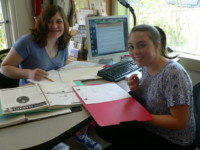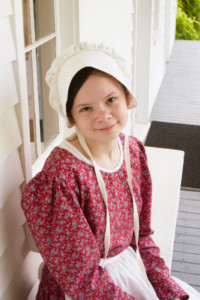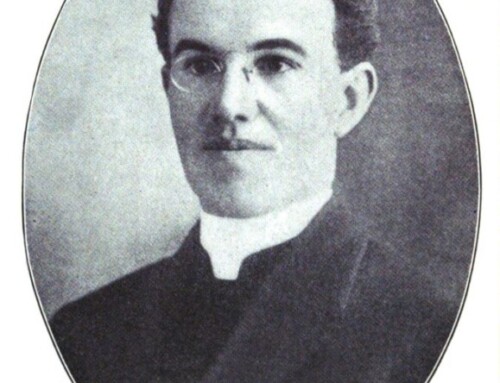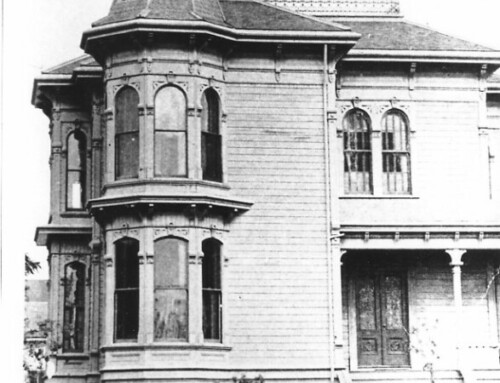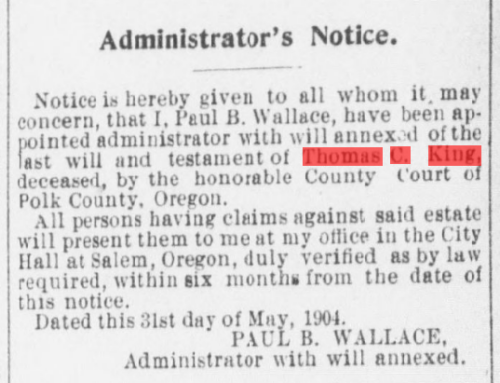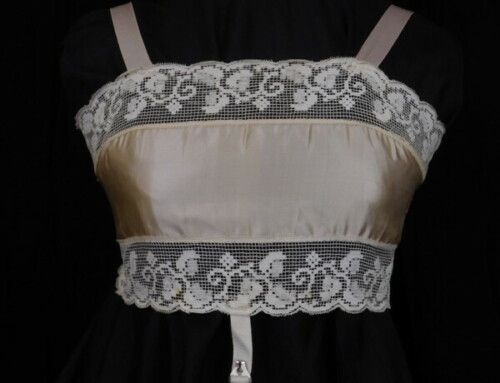Each June after the proverbial school bell rings in summer vacation, the Teen Interpreter Program at the Willamette Heritage Center begins. High school students from the greater Salem area head to the WHC classroom for instruction in customer service, living history interpretation, research skills, historic textile crafts and more. All in preparation to portray historic characters on the museum grounds and help our visitors connect to history. Along the way our TIP students often discover a personal connection to history as well. With over a hundred years of history to choose from, 1840-1940, students are encouraged to pick an historic person with ties to Salem, Marion County, or the greater Willamette Valley. Should be easy right? Not always. Let’s step back in the past for a look at some of our TIP student’s favorite characters to portray and why.
Thomas Benjamin Kay (1864-1931)
Born into the prominent Kay Woolen Mill family, young Thomas’ life began with the adventure of immigrating to Oregon via the Isthmus of Panama. Then at the tender age of 9 he began work at his father’s mill in Brownsville where he remained until the age of 14, learning mill work from the ground up. Educated at Baptist College, now Linfield, he was groomed to take over the family business. His dream however, lay in politics, and he would go on to serve in the Oregon House of Representatives, the Oregon State Senate, and as State Treasurer.
On the death of his father Thomas Lister Kay, he assumed the family obligation and responsibility expected of him by taking over the management of the family wool mill. Thomas Benjamin is a complex character to portray but appeals to TIP students because of his internal struggle to balance his familial obligations with his political aspirations. As former TIP student Peter Mabey expressed it, “teens face the same struggle, the fight for their own dreams against a parent’s plans for their future.”
Cornelia Marvin Pierce (1873-1957)
Feisty and formidable, Cornelia Marvin Pierce moved to Salem in 1905 to head a new agency, the Oregon Library Commission (OLC) which later became the State Library. At a time when women’s voices were often ignored Cornelia made herself heard as a fierce advocate for the important work of building a state library system. Her leadership and political muscle appeals to our young TIP students. One of our past TIP students spent hours researching Cornelia’s life including one nagging question, where was Cornelia buried?
This proved tough to answer, but with a persistence Cornelia would have been proud of, Kayla Burns continued to search. After looking at the death certificate, she checked local cemetery records, consulted State Library staff, combed thru obituaries, funeral notices, and newspaper accounts of the settlement of Cornelia’s estate. It was only after a visit to the Polk County courthouse to obtain copies of the probate packet that the matter was resolved. Her remains had been cremated and the ashes scattered over family property in Eastern Oregon.
Alfred Agate (1812-1846)
Artist and explorer Alfred Agate traveled through the Oregon Territory with the Wilkes Expedition of 1838-1842. A skilled painter and miniaturist, he provided a visual record of the expedition with his sketches and paintings. Alfred’s story and artistic gifts resonated with TIP student Tim Ethell, a talented artist and musician himself. Tim immersed himself in the details of his character’s experience on the expedition, hand-sewing leather pants and moccasins for his costume and demonstrating Alfred’s method of sketching in the field.
Susan Downing Shepard (1803-1890)
A perennial favorite of TIP students, Susan Downing was the fiancé of Methodist missionary and schoolteacher Cyrus Shepard. Two years after Cyrus had left her to join Rev. Jason Lee in traveling to the Oregon Territory to establish a Methodist Mission, he sent for her to join him. They were married in a joint wedding ceremony with two other couples including Rev. Jason Lee and Susan’s friend Anna Maria Pittman.
Susan was a faithful correspondent with family members back in Massachusetts. From her letters we learn about life onboard ship, the wedding cake she baked for King Kamehameha III of the Sandwich Islands and her feelings as her ship sailed up the Columbia River and into sight of Ft. Vancouver after months at sea.
She and Cyrus taught and cared for the native children that attended the mission school. Tragically, Cyrus suffered from debilitating health problems and Susan found herself nursing him until his untimely death in 1840. Then after marrying a second time, Susan found herself in the same situation with J.L. Whitcomb. A young widow, twice over.
TIP students can identify with Susan’s story of young love parted, reunited, and then tragically torn apart. As one of our past TIP students expressed so beautifully after reading Susan’s letters, “It was really emotional for me to read firsthand about the events of her life. I became even more determined to portray her as the woman of strength and resilience she was.”
According to an Emory University study by Dr. Marshall Duke and Dr. Robyn Fivush, teens that have the most self-confidence have a strong “intergenerational self”. They know they belong to something bigger than themselves. We see this effect every summer in the teens that belong to our Teen Interpreter Program. They connect with history in a personal way, gaining perspective and drawing on the strength of the past to face their own future.
Learn more about the Teen Interpreter Program at https://www.willametteheritage.org/teen-interpreter-program/
This article was written by Kaylyn Mabey for the Statesman Journal where it was printed 19 May 2019.



